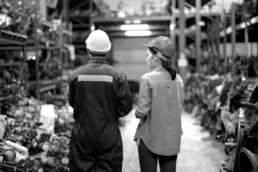Steel is one of the most widely used materials in the world, with applications in construction, transportation, and manufacturing. However, traditional steelmaking processes are notorious for their high carbon emissions and environmental impact. As concerns about climate change and sustainability continue to grow, there is increasing interest in developing methods for eco-friendly steelmaking. In this blog, we will explore some of the methods for eco-friendly steelmaking and their potential benefits.
Recycling Scrap Metal
Recycling scrap metal is an effective way to reduce carbon emissions and conserve resources. The process involves melting down scrap metal in electric arc furnaces (EAFs) or induction furnaces and reusing it to produce new steel. This process consumes less energy and emits fewer greenhouse gases than traditional steelmaking processes. Additionally, recycling scrap metal helps to conserve natural resources and reduces the need for mining and extraction.
Direct Reduced Iron (DRI)
Direct reduced iron (DRI) is a type of iron produced from natural gas or coal in a reducing atmosphere. This process involves removing oxygen from iron ore through a chemical reaction, resulting in a pure form of iron. DRI can be used as a substitute for scrap metal in EAFs, reducing the amount of carbon emissions and energy required to produce steel. DRI is also a versatile material that can be used in a variety of applications, including construction and manufacturing.
Hydrogen Reduction
Hydrogen reduction is a relatively new method for steelmaking that uses hydrogen gas instead of coal or natural gas. This process involves reacting iron ore with hydrogen gas at high temperatures, resulting in a pure form of iron. Hydrogen reduction has the potential to significantly reduce carbon emissions, as hydrogen gas can be produced from renewable energy sources. Additionally, hydrogen reduction can produce high-quality steel with fewer impurities than traditional steelmaking processes.
Biomass-Based Reducing Agents
Biomass-based reducing agents are another promising method for eco-friendly steelmaking. This process involves using plant-based materials, such as sawdust or straw, as reducing agents in blast furnaces. These materials are burned in the furnace, producing carbon monoxide gas that reacts with iron ore to produce pure iron. Biomass-based reducing agents have the potential to significantly reduce carbon emissions and are a renewable resource.
In conclusion, eco-friendly steelmaking methods are essential to reducing carbon emissions and preserving natural resources. Recycling scrap metal, using direct reduced iron, hydrogen reduction, and biomass-based reducing agents are just a few of the methods being explored by researchers and manufacturers. While each of these methods has its advantages and disadvantages, they all represent significant progress towards a more sustainable and eco-friendly steel industry. By adopting these methods and investing in further research and development, we can create a more sustainable future for ourselves and the planet.


